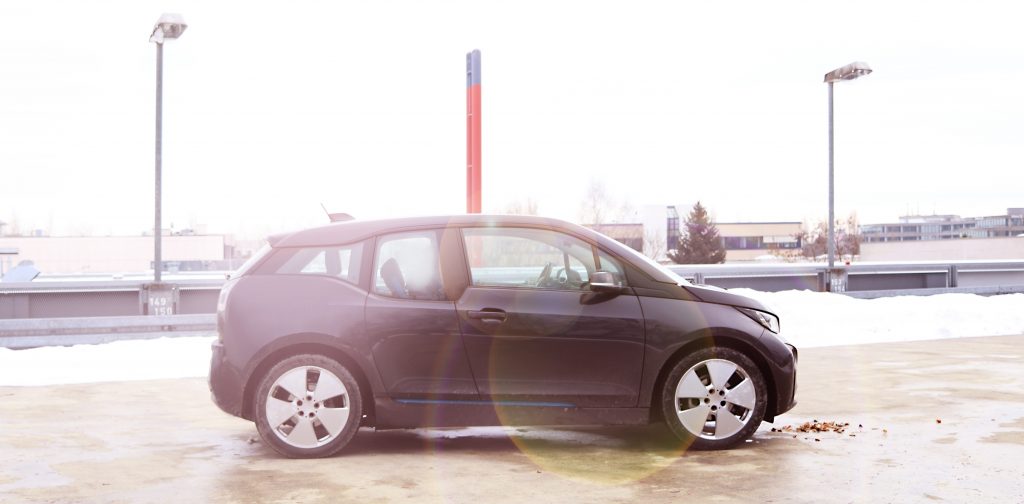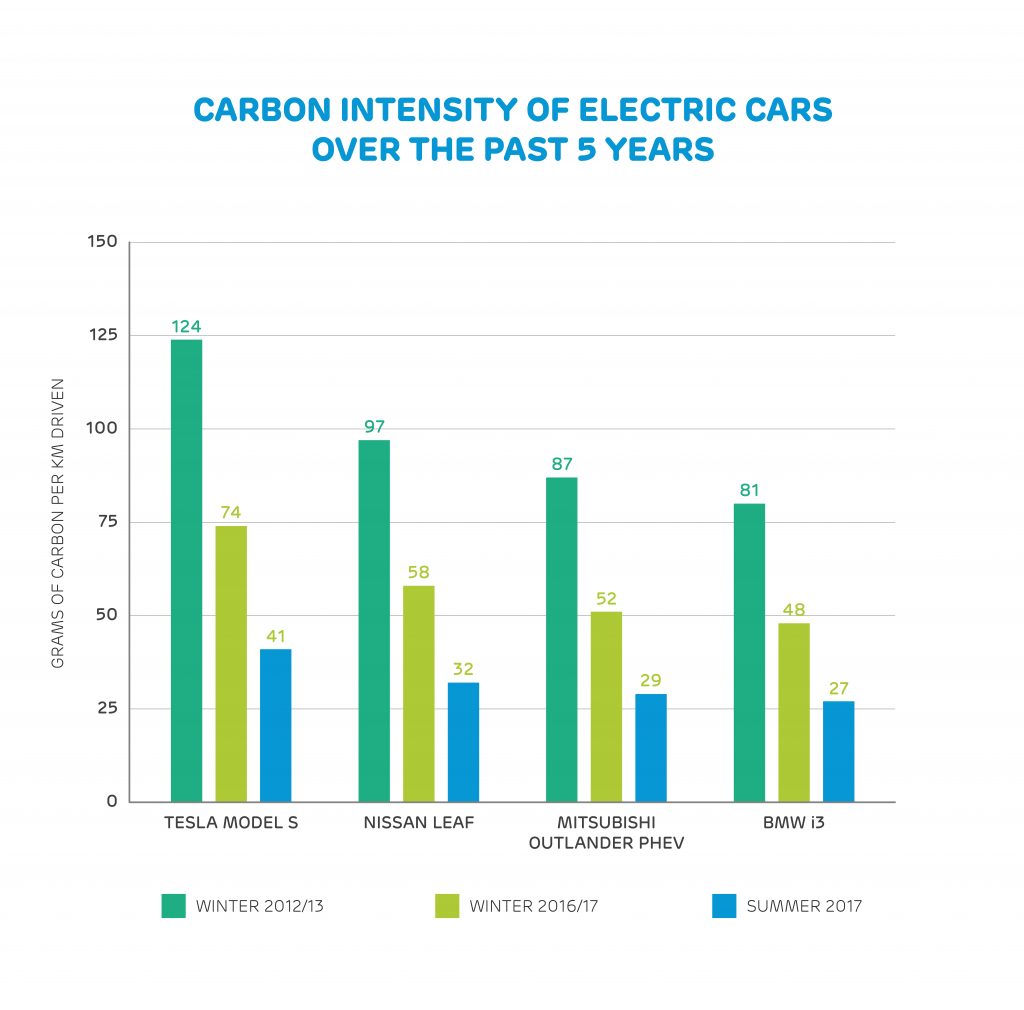By Paul Homewood
This post is mainly a discussion piece. I’ve put my thoughts down, but I don’t insist I’m right!
Drax have this post, based on research by the Imperial College:
19th August 2017
Electric vehicles (EVs) are often seen as a key driver towards a greener future. Indeed, transport accounts for roughly a quarter of the UK’s greenhouse gas emissions and seriously affects air quality in major cities.
To tackle pollution problems, governments around the world are implementing ambitious policies to promote the electrification of transport and phase out ICE (internal combustion engine) vehicles. The UK and France both plan to ban the sale of petrol- and diesel-only cars by 2040 while India is setting an even more ambitious end date of 2030.
Added to this are EVs’ growing popularity with drivers. There are now almost 110,000 electric cars and vans on UK roads spurred on by lowering battery costs and a growing range of models. Including plug-in hybrid vehicles, EVs now account for 2% of new registrations.
Switching to EVs is an obvious way to massively cut pollution in areas of dense traffic. But the question remains – how clean are EVs on the broader scale, when you look at the electricity used to charge them?

Electric vehicles are getting cleaner
EVs don’t give off the same exhaust emissions as engines, but the power in their batteries has to come from somewhere. Follow the flow back from the car, through the charging point, all the way back to the power station and it’s likely some of that electricity is coming from fossil fuels. And that means emissions.
“They weren’t as green as you might think up until quite recently,” says Dr Iain Staffell, a researcher at Imperial College London and author of Electric Insights – a study commissioned by Drax that analyses electricity generation data in Britain. “Now, thanks to the rapid decarbonisation of electricity generation in the UK, EVs are delivering much better results,” he continues.
In fact, year-round average emissions from EVs have fallen by half in the last four years thanks to greener electricity generation. Today, they are twice as efficient as conventional cars.
Take the Tesla Model S. In the winter of 2012, producing the electricity for a full charge created 124g of carbon emissions per km driven, roughly the same as a 2L Range Rover Evoque. Now the carbon intensity of charging a Tesla has nearly halved to 74g/km in winter and 41 g/km in summer, as the UK continues to break its own renewable energy records. For smaller EVs, the results are even better. The Nissan Leaf and BMW i3 can now be charged for less than half the CO2 of even the cleanest non-plug-in EV, the Toyota Prius Hybrid.

So, the current outlook for EVs is hugely positive – but as their numbers continue to increase, will the demand they add to the grid put their clean credentials at risk?
Will EVs accelerate electricity demand?
The National Grid suggests there could be as many as nine million EVs on UK roads by 2030, which could lead to an additional 4-10 GW of demand on the system at peak times. This, in some cases, could lead to a rise in emissions.
Electricity demand in Britain typically peaks between 6pm and 10pm, when people arrive home and switch on lights and appliances. If you were to charge your EV between those evening hours, the emissions would be 8% higher than reported in the chart above. If you charged between midnight and 6am, they would be 10% lower.
Today, this demand is met by the existing mix of power stations (which last quarter included more than 50% renewable and low-carbon sources). But when there are sudden spikes in demand above this typical usage, the National Grid must call in the help of carbon-intensive reserve generators, such as coal-powered stations. Polluting diesel generators are also on standby around the UK, ready to turn on and feed into regional distribution grids at a moment’s notice.
Commissioned by Drax, Electric Insights is produced independently by a team of academics from Imperial College London, led by Dr Iain Staffell and facilitated by the College’s consultancy company – Imperial Consultants.
https://www.drax.com/technology/electric-vehicles-actually-reduce-carbon-emissions/
The claim that EVs are now becoming less carbon intensive is based on the assumption that the electricity they use comes from the average mix of renewables, coal, gas and so on. But is this true?
The electricity that EVs use is, in fact, additional to “normal” demand. If, for instance, current consumption is 330 Twh, and EVs increase this to 380 TWh, then that extra 50 Twh has to be sourced on top of existing generation.
It therefore does not follow that this extra 50 Twh will have the same mix as the 330 Twh.
This may all sound a bit abstract, so let’s look at some actual examples.
The National Grid hopes we’re all going to charge our cars at night.
If we look at the grid since midnight yesterday, we see that nuclear and wind are pretty much constant throughout.
There is a very good reason for this. Because the marginal costs of each are virtually nil, they can afford to undercut other generators.
The subsidy system for wind means that wind operators can afford to go down to a penny per Mwh if necessary.
Indeed, if all generators were nationalised and there were no subsidies, it would still be economic absurdity to throw away what is effectively free power in marginal terms.
https://www.solar.sheffield.ac.uk/pvlive/#
What the grid is doing is maximising the use of wind and nuclear on the grid. The only real exception is when there is so much wind power that wind farms are paid to switch off.
It is therefore dispatchable sources, mainly gas and coal that take up the slack, for instance during the evening. Even at the times of lowest demand, this is still the case.
If any additional demand arrives, for instance from EVs, it is these dispatchable sources that will supply it, even at night when demand is usually at its lowest.
Of course, many cars will need charging during the day, when demand is higher still.
Are there any times when low carbon electricity is enough to fulfil all current demand plus EVs?
According to UK Gridwatch, demand never goes lower than about 25GW.
http://www.gridwatch.templar.co.uk/
BEIS figures show that wind and nuclear capacity is around 27 GW, but given that wind accounts for 19 GW , it is very rare that all of this would be available, given the fact that wind almost never operates at full capacity.
It is often claimed that surplus wind and solar output can be stored for overnight use. But this is a fake claim.
Given current capacity, there is never enough low carbon capacity at any time of day to store spare output for times of low demand. If there was, there would be periods everyday when there was no fossil fuel output at all.
If, for instance, solar power was stored during peak periods for use at night, it would simply mean that more power was needed from other sources during the day, as some of that solar energy was diverted to storage.
The bottom line is that EVs, at least under the generation scenarios likely for the foreseeable future, will be fuelled by fossil fuel generation.
Whether this represents a lower carbon intensity than petrol or diesel, I don’t know. But it is dishonest for Drax to claim that this is not the case.
This leaves one other conundrum.
The article I linked to at the start is based on a supposedly expert analysis by the Imperial College.
It is inconceivable that they are not aware of all of the facts I have shown above. So why have they chosen to ignore them, and present a thoroughly misleading picture?
Perhaps the clue lies in the fact that the Imperial College’s research, Electric Insights, was commissioned by Drax. Is it any wonder that their research has been corrupted to suit the interests of their heavily subsidised, biomass producing paymasters?
via NOT A LOT OF PEOPLE KNOW THAT
February 25, 2018 at 04:57PM



